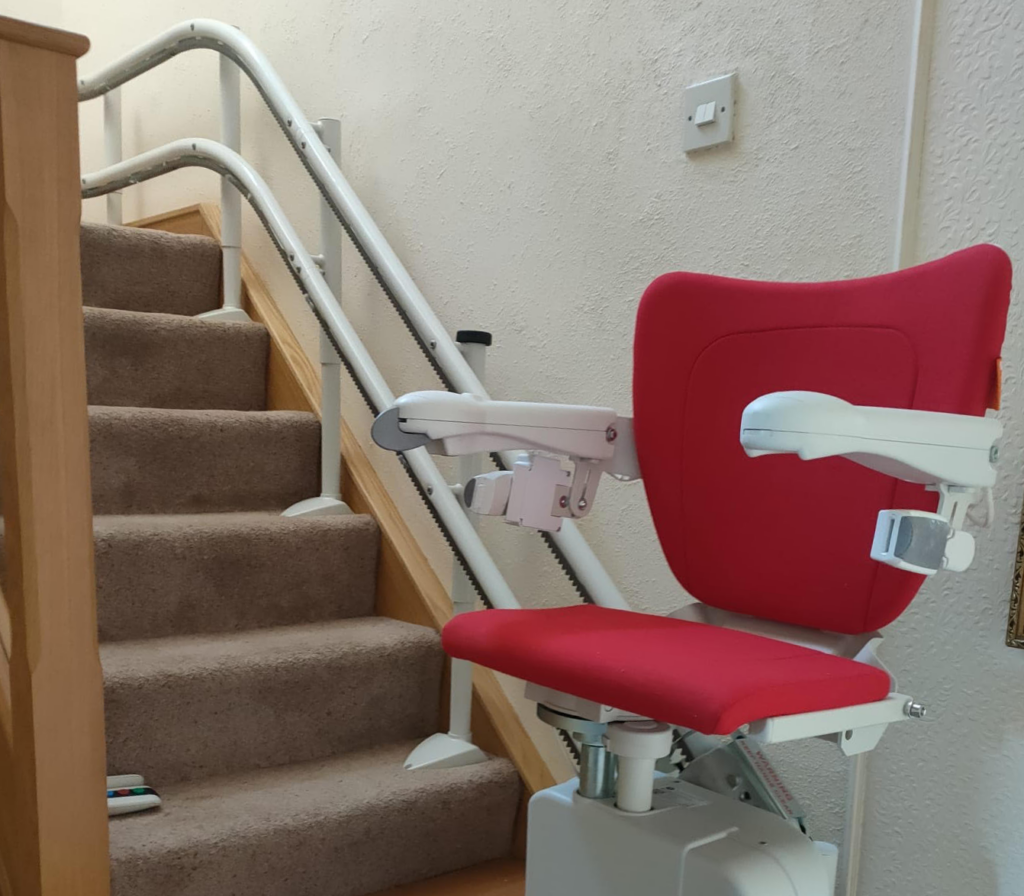Is My Staircase Too Narrow For A Stair Lift?

“I’ve been told my staircase is too narrow for a stair lift.”
Is that true? What is the minimum width you require for a stair lift? A very common question indeed. It is the starting point for your journey into owning a stair lift, so a very important question indeed. Concerns about staircase width are common when considering the installation of a stair lift.
Table of Contents
Here Are Some Useful Suggestions and Tips To Address This Question.
Understanding Staircase Requirements
- Minimum Width Standards: As a rule of thumb, a staircase needs to be at least 28 inches wide to fit a straight stair lift comfortably. If the staircase is curved, the minimum width will increase to possibly 32 inches wide. However, some compact models can be installed on
- Staircases as Narrow as 26 Inches: As for the cab itself, a standard residential elevator cab typically measures about 3 feet wide by 4 feet deep, which necessitates a hoistway measuring at least 4 feet wide and 5 feet deep.
- Customised Solutions: Many stair lift manufacturers offer solutions for narrow staircases, including slimline models and fold-up options that minimise space usage.
- Professional Assessment: Always have a stair lift professional conduct an in-home assessment. They can provide accurate measurements and discuss options that can work within your space constraints.
Tips for Narrow Staircases
- Fold-away Features: Look for stairlifts with seats, arms, and footrests that fold away when not in use to keep the stairway clear for other users.
- Swivel Seats: Some stairlifts have swivel seats that can aid in getting on and off the lift without needing extra space at the top or bottom of the stairs.
- Perch Seats: For very narrow staircases, a perch seat stair lift, where the user is almost in a standing position, may be appropriate.
Alternative Stair lift Options
If a traditional stair lift is not viable, consider other mobility solutions such as through-floor lifts or home alterations. These may come at a hefty price but might be the only solution. An alternative to a stair lift is a standing stair lift. Unlike conventional stairlifts, a standing stair lift enables you to remain active, but at the same time offers the needed extra support while climbing and coming down your stairs, whilst saving on horizontal space.
Addressing Safety Concerns
- Safety Codes and Regulations: Ensure that any stair lift installation complies with local building codes and safety standards.
- Clearance for Walking: It’s important that there is still enough room for others to use the stairs safely after the stair lift is installed.
- Obstruction Sensors: A stair lift designed for narrow staircases should come with obstruction sensors to stop the lift if something blocks its path.
Post-Installation
- Trial Periods: Some companies offer trial installations, allowing you to test the stair lift in your home to ensure it fits well and meets your needs.
- User Training: Ensure the user is comfortable with operating the stair lift, especially in tight spaces, to maximize safety and confidence.
Future Planning
Resale and Removal in certain cases we will be able to buy back your old stairlift depending on the age and model. If you are moving house depending on the staircase we may be able to remove it and reinstall but it is not always guaranteed as every staircase is different.
Stairlifts Designed For Narrow Staircases
We offer certain stairlift models that are designed for narrow staircases.
- AccessBDD Flow X – This is an exceptional curved stairlift with modern aesthetics fused with innovation. The Flow X has advanced stairlift levelling, swivel footrests, and an integrated joystick. This model can fit narrow staircases from 61cm (24 inches).
- The Handicare 1100 – This model stands out as it features a slim rail design which can fit narrow staircases from 64.5 cm (25.5 inches)
You can also have a look at standing stairlifts to help reduce the space between your knee and the wall.
In Summary
By taking these points into consideration, you can provide your own comprehensive response to concerns about staircase width and stair lift installation.
At the end of the day, it’s all about finding the right solution tailored to your home’s
specific dimensions and the user’s needs. We always recommend consulting with a reputable stairlift company to get the most accurate information and enjoy personalised advice.
Senior Stairlifts may be able to help you with your narrow staircase. If you would like our assistance with finding the right option for your narrow stairs you can contact us to see what we can do for you.